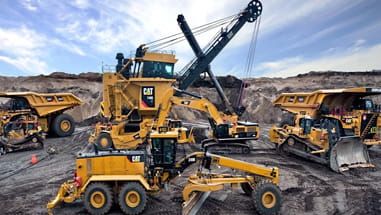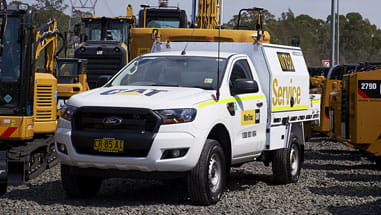With our huge inventory of new, used and rental equipment, WesTrac has the right machine for the job.
Excavators
Compare Models
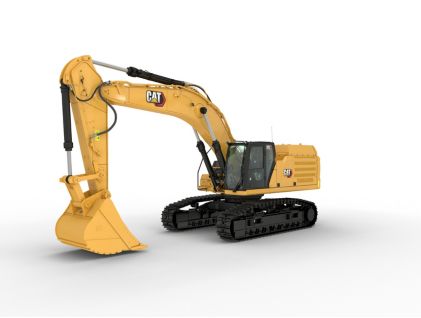
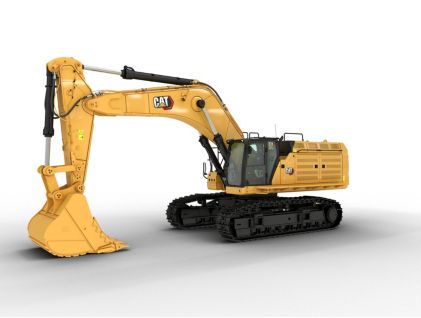
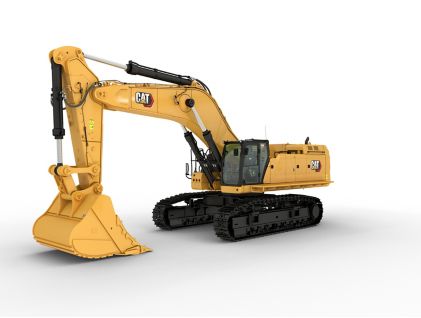
UNITS:
Metric
Imperial
Engine
Net Power - ISO 9249
330 kW
443 hp
-
-
Net Power - ISO 9249 (DIN)
449 hp (metric)
449 hp (metric)
-
-
Engine Model
Cat C13B
Cat C13B
Cat C15
Cat C15
Cat C18
Cat C18
Engine Power - ISO 14396:2002
332 kW
445 hp
-
405 kW
543 hp
Engine Power - ISO 14396 (DIN)
451 hp (metric)
451 hp (metric)
-
-
Bore
130 mm
5 in
137 mm
5.4 in
145 mm
6 in
Stroke
157 mm
6 in
171 mm
6.7 in
183 mm
7 in
Displacement
12.5 l
763 in³
15.2 l
928 in³
18.1 l
1105 in³
Biodiesel Capability
Up to B20¹
Up to B20¹
Up to B20¹
Up to B20¹
B20¹
B20¹
Emissions
Meets U.S. EPA Tier 4 Final, EU Stage V, and Japan 2014
emission standards.
Meets U.S. EPA Tier 4 Final, EU Stage V, and Japan 2014
emission standards.
Meets U.S. EPA Tier 4 Final, EU Stage V, Korea Stage V, and Japan 2014 emission standards.
Meets U.S. EPA Tier 4 Final, EU Stage V, Korea Stage V, and Japan 2014 emission standards.
Meets U.S. EPA Tier 4 Final, EU Stage V, Korea Stage V, and Japan 2014 emission standards.
Meets U.S. EPA Tier 4 Final, EU Stage V, Korea Stage V, and Japan 2014 emission standards.
Note (1)
Net power advertised is the power available at the flywheel when the engine is equipped with fan, air intake system, exhaust system, and alternator with engine speed at 2,000 rpm. Advertised power is tested per the specified standard in effect at the time of manufacture.
Net power advertised is the power available at the flywheel when the engine is equipped with fan, air intake system, exhaust system, and alternator with engine speed at 2,000 rpm. Advertised power is tested per the specified standard in effect at the time of manufacture.
Net power advertised is the power available at the flywheel when the engine is equipped with fan, air intake system, exhaust system, and alternator with engine speed at 1,700 rpm. Advertised power is tested per the specified standard in effect at time of manufacture.
Net power advertised is the power available at the flywheel when the engine is equipped with fan, air intake system, exhaust system, and alternator with engine speed at 1,700 rpm. Advertised power is tested per the specified standard in effect at time of manufacture.
Net power advertised is the power available at the flywheel when the engine is equipped with fan, air intake system, exhaust system and alternator with engine speed at 1,700 rpm. Advertised power is tested per the specified standard in effect at time of manufacture.
Net power advertised is the power available at the flywheel when the engine is equipped with fan, air intake system, exhaust system and alternator with engine speed at 1,700 rpm. Advertised power is tested per the specified standard in effect at time of manufacture.
Note (2)
¹Cat diesel engines are required to use ULSD (ultra-low sulfur diesel fuel with 15 ppm of sulfur or less) or ULSD blended with the following lower-carbon intensity fuels** up to: 20% biodiesel FAME (fatty acid methyl ester)* or 100% renewable diesel, HVO (hydrotreated vegetable oil) and GTL (gas-to-liquid) fuels. Refer to guidelines for successful application. Please consult your Cat dealer or "Caterpillar Machine Fluids Recommendations" (SEBU6250) for details. *Engines with no aftertreatment devices can use higher blends, up to 100% biodiesel (for use of blends higher than 20% biodiesel, consult your Cat dealer). **Tailpipe greenhouse gas emissions from lower-carbon intensity fuels are essentially the same as traditional fuels.
¹Cat diesel engines are required to use ULSD (ultra-low sulfur diesel fuel with 15 ppm of sulfur or less) or ULSD blended with the following lower-carbon intensity fuels** up to: 20% biodiesel FAME (fatty acid methyl ester)* or 100% renewable diesel, HVO (hydrotreated vegetable oil) and GTL (gas-to-liquid) fuels. Refer to guidelines for successful application. Please consult your Cat dealer or "Caterpillar Machine Fluids Recommendations" (SEBU6250) for details. *Engines with no aftertreatment devices can use higher blends, up to 100% biodiesel (for use of blends higher than 20% biodiesel, consult your Cat dealer). **Tailpipe greenhouse gas emissions from lower-carbon intensity fuels are essentially the same as traditional fuels.
¹Cat diesel engines are required to use ULSD (ultra-low sulfur diesel fuel with 15 ppm of sulfur or less) or ULSD blended with the following lower-carbon intensity fuels** up to: 20% biodiesel FAME (fatty acid methyl ester)* or 100% renewable diesel, HVO (hydrotreated vegetable oil) and GTL (gas-to-liquid) fuels.Refer to guidelines for successful application. Please consult your Cat dealer or “Caterpillar Machine Fluids Recommendations” (SEBU6250) for details. * Engines with no aftertreatment devices can use higher blends, up to 100% biodiesel (for use of blends higher than 20% biodiesel, consult your Cat dealer).** Tailpipe greenhouse gas emissions from lower-carbon intensity fuels are essentially the same as traditional fuels.
¹Cat diesel engines are required to use ULSD (ultra-low sulfur diesel fuel with 15 ppm of sulfur or less) or ULSD blended with the following lower-carbon intensity fuels** up to: 20% biodiesel FAME (fatty acid methyl ester)* or 100% renewable diesel, HVO (hydrotreated vegetable oil) and GTL (gas-to-liquid) fuels.Refer to guidelines for successful application. Please consult your Cat dealer or “Caterpillar Machine Fluids Recommendations” (SEBU6250) for details. * Engines with no aftertreatment devices can use higher blends, up to 100% biodiesel (for use of blends higher than 20% biodiesel, consult your Cat dealer).** Tailpipe greenhouse gas emissions from lower-carbon intensity fuels are essentially the same as traditional fuels.
¹Cat diesel engines are required to use ULSD (ultra-low sulfur diesel fuel with 15 ppm of sulfur or less) or ULSD blended with the following lower-carbon intensity fuels** up to: 20% biodiesel FAME (fatty acid methyl ester)* or 100% renewable diesel, HVO (hydrotreated vegetable oil) and GTL (gas-to-liquid) fuels.Refer to guidelines for successful application. Please consult your Cat dealer or “Caterpillar Machine Fluids Recommendations” (SEBU6250) for details. * Engines with no aftertreatment devices can use higher blends, up to 100% biodiesel (for use of blends higher than 20% biodiesel, consult your Cat dealer).** Tailpipe greenhouse gas emissions from lower-carbon intensity fuels are essentially the same as traditional fuels.
¹Cat diesel engines are required to use ULSD (ultra-low sulfur diesel fuel with 15 ppm of sulfur or less) or ULSD blended with the following lower-carbon intensity fuels** up to: 20% biodiesel FAME (fatty acid methyl ester)* or 100% renewable diesel, HVO (hydrotreated vegetable oil) and GTL (gas-to-liquid) fuels.Refer to guidelines for successful application. Please consult your Cat dealer or “Caterpillar Machine Fluids Recommendations” (SEBU6250) for details. * Engines with no aftertreatment devices can use higher blends, up to 100% biodiesel (for use of blends higher than 20% biodiesel, consult your Cat dealer).** Tailpipe greenhouse gas emissions from lower-carbon intensity fuels are essentially the same as traditional fuels.
Hydraulic System
Main System - Maximum Flow
779 l/min (206 gal/min)
779 l/min (206 gal/min)
-
-
Maximum Pressure - Equipment
35000 kPa
5076 psi
37000 kPa
5366 psi
37000 kPa
5366 psi
Maximum Pressure - Equipment - Lift Mode
38000 kPa
5511 psi
-
-
Maximum Pressure - Travel
35000 kPa
5076 psi
35000 kPa
5076 psi
35000 kPa
5076 psi
Maximum Pressure - Swing
26000 kPa
3771 psi
35000 kPa
5076 psi
31000 kPa
4496 psi
Swing Mechanism
Swing Speed
8.3 r/min
8.3 r/min
6.34 r/min
6.34 r/min
6.26 r/min
6.26 r/min
Maximum Swing Torque
189 kN·m
139000 ft·lbf
-
-
Weights
Operating Weight
48900 kg
107800 lb
73890 kg
162900 lb
94000 kg
207400 lb
Note
-
Long Variable Gauge undercarriage, Reach boom, R4.67VB (15'4") stick, SD 3.3 m³ (4.32 yd³) bucket, 900 mm (35") HD double grouser shoes and removal type counterweight.
Long Variable Gauge undercarriage, Reach boom, R4.67VB (15'4") stick, SD 3.3 m³ (4.32 yd³) bucket, 900 mm (35") HD double grouser shoes and removal type counterweight.
-
Note (1)
-
-
Long Variable Gauge undercarriage, GP boom, R4.4HB2 (14'5") stick, SD 5.2 m³ (6.8 yd³) bucket, 900 mm (35") double grouser shoes and counterweight with removal device.
Long Variable Gauge undercarriage, GP boom, R4.4HB2 (14'5") stick, SD 5.2 m³ (6.8 yd³) bucket, 900 mm (35") double grouser shoes and counterweight with removal device.
Service Refill Capacities
Fuel Tank Capacity
715 l
188.9 gal (US)
920 l
243 gal (US)
1220 l
322 gal (US)
Cooling System
52 l
13.7 gal (US)
71 l
19 gal (US)
71 l
19 gal (US)
Engine Oil
40 l
10.6 gal (US)
62 l
16 gal (US)
-
Swing Drive
10.5 l
2.8 gal (US)
20 l
5 gal (US)
24 l
6 gal (US)
Final Drive - Each
9.5 l
2.5 gal (US)
32 l
9 gal (US)
20 l
5 gal (US)
Hydraulic System - Including Tank
550 l
145.3 gal (US)
620 l
164 gal (US)
-
Hydraulic Tank
217 l
57.3 gal (US)
326 l
86 gal (US)
-
DEF Tank
80 l
21.1 gal (US)
80 l
21 gal (US)
-
Dimensions
Boom
Reach 6.9 m (22'8")
Reach 6.9 m (22'8")
Reach 7.8m (25'7")
Reach 7.8m (25'7")
GP 8.4m (25'7")
GP 8.4m (25'7")
Stick
Reach 3.9 m (12'10")
Reach 3.9 m (12'10")
R3.6m (11'10")
R3.6m (11'10")
R4.4m (14'5")
R4.4m (14'5")
Bucket
HD 3.3 m³ (4.32 yd³)
HD 3.3 m³ (4.32 yd³)
SD 3.3 m³ (4.32 yd³)
SD 3.3 m³ (4.32 yd³)
SD 5.2m³ (6.8 yd³)
SD 5.2m³ (6.8 yd³)
Shipping Height - Top of Cab
3230 mm
10.7 ft
3559 mm
11.8 ft
3670 mm
12 ft
Handrail Height
3370 mm
11.1 ft
-
-
Shipping Length
11900 mm
39.1 ft
-
-
Tail Swing Radius
3760 mm
12.4 ft
-
4840 mm
15.11 ft
Counterweight Clearance
1280 mm
4.2 ft
-
-
Ground Clearance
475 mm
1.7 ft
782 mm
2.6 ft
-
Track Length
5370 mm
17.7 ft
-
-
Track Length to Center of Rollers
4360 mm
14.4 ft
-
-
Track Gauge
2740 mm
9 ft
-
-
Transport Width
3640 mm
11.11 ft
3400 mm
11.1 lb/in
-
Note
-
Track gauge undercarriage extended with 650 mm (26") shoes; transport width undercarriage retracted with 650 mm (26") shoes and no steps
Track gauge undercarriage extended with 650 mm (26") shoes; transport width undercarriage retracted with 650 mm (26") shoes and no steps
Track gauge undercarriage extended with 900 mm (35") shoes; transport width undercarriage retracted with 900 mm (35") shoes and no steps
Track gauge undercarriage extended with 900 mm (35") shoes; transport width undercarriage retracted with 900 mm (35") shoes and no steps
Working Ranges and Forces
Maximum Digging Depth
8210 mm
26.11 ft
-
-
Boom
Reach 6.9 m (22'8")
Reach 6.9 m (22'8")
Reach 7.8m (25'7")
Reach 7.8m (25'7")
GP 8.4m (25'7")
GP 8.4m (25'7")
Stick
Reach 3.9 m (12'10")
Reach 3.9 m (12'10")
R3.6m (11'10")
R3.6m (11'10")
R4.4m (14'5")
R4.4m (14'5")
Bucket
HD 3.3 m³ (4.32 yd³)
HD 3.3 m³ (4.32 yd³)
SD 3.3 m³ (4.32 yd³)
SD 3.3 m³ (4.32 yd³)
SD 5.2m³ (6.8 yd³)
SD 5.2m³ (6.8 yd³)
Maximum Reach at Ground Level
12150 mm
39.9 ft
-
-
Maximum Cutting Height
10730 mm
35.2 ft
-
-
Maximum Loading Height
7420 mm
24.4 ft
-
9250 mm
30.4 ft
Minimum Loading Height
2200 mm
7.3 ft
-
-
Maximum Depth Cut for 2440 mm (8 ft) Level Bottom
8080 mm
26.6 ft
-
-
Maximum Vertical Wall Digging Depth
5860 mm
19.3 ft
-
-
Bucket Digging Force - ISO
267 kN
60000 lbf
-
-
Stick Digging Force - ISO
183 kN
41100 lbf
-
-
Air Conditioning System
Air Conditioning
The air conditioning system on this machine contains the fluorinated greenhouse gas refrigerant R134a (Global Warming Potential = 1430). The system contains 1.00 kg of refrigerant, which has a CO2 equivalent of 1.430 metric tonnes.
The air conditioning system on this machine contains the fluorinated greenhouse gas refrigerant R134a (Global Warming Potential = 1430). The system contains 1.00 kg of refrigerant, which has a CO2 equivalent of 1.430 metric tonnes.
The air conditioning system on this machine contains the fluorinated greenhouse gas refrigerant R134a (Global Warming Potential = 1430). The system contains 1.00 kg (2.2lb) of refrigerant, which has a CO2 equivalent of 1.430 metric tonnes (1.576 tons).
The air conditioning system on this machine contains the fluorinated greenhouse gas refrigerant R134a (Global Warming Potential = 1430). The system contains 1.00 kg (2.2lb) of refrigerant, which has a CO2 equivalent of 1.430 metric tonnes (1.576 tons).
The air conditioning system on this machine contains the fluorinated greenhouse gas refrigerant R134a (Global Warming Potential = 1430). The system contains 1.00 kg (2.2lb) of refrigerant, which has a CO2 equivalent of 1.430 metric tonnes (1.576 tons).
The air conditioning system on this machine contains the fluorinated greenhouse gas refrigerant R134a (Global Warming Potential = 1430). The system contains 1.00 kg (2.2lb) of refrigerant, which has a CO2 equivalent of 1.430 metric tonnes (1.576 tons).
Sustainability
Recyclability
98%
98%

